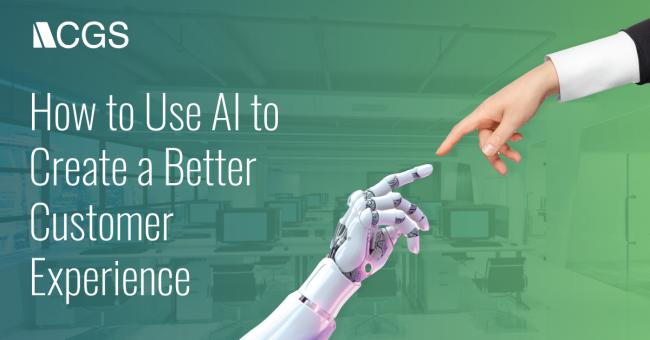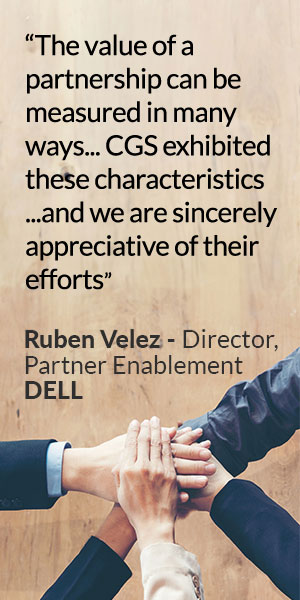How to Use AI to Create a Better Customer Experience

Starting an article by speaking to the current AI hype cycle feels like starting a blog post in 2020 with the phrase “In this moment of unprecedented uncertainty…”
We all know what’s going on. Enterprises are rushing to adopt AI tech. There’s a pervasive fear of missing out (FOMO), but at the same time there’s so much uncertainty.
Where’s this train heading? What’s real and what isn’t? How do I de-risk my company’s investment without falling behind the competition?
It’s been almost a year since OpenAI’s ChatGPT release kicked off an AI arms race. Since then, the ghost in the machine has lost a bit of its magic as people wake up to what it can do and what it can’t—at least not yet.
Looking specifically at customer experience (CX) and contact centers, AI has just as much potential for creating better experiences as it does to drag it down. Smart organizations are paying close attention to the details, iterating quickly, and charting a path forward.
That’s why two senior leaders at CGS recently joined Adrian Swinscoe on the Punk CX podcast to discuss CX in the age of AI. Catherine Jooste, President of our business process outsourcing (BPO) division, and John Samuel, CGS’s CTO, covered their lessons learned and best practices for using AI to create better customer experiences.
LISTEN TO PODCAST: Punk CX / CGS Podcast: CX, AI & Outsourcing – The Future
If you do it right, you can create brand ambassadors and transform your contact center from a cost center into a value center.
Here’s how.
Don’t replace people with AI
Understand what can and can’t be automated.
“Companies That Replace People with AI Will Get Left Behind” reads a Harvard Business Review headline. They’re right on the money. So much of the AI conversation revolves around cutting costs and displacing workers, but companies that lean too hard in that direction, especially in the CX department, are facing the consequences.
“Sometimes cheap is very expensive,” explains Samuel. You work so hard and spend so much money to acquire a customer, only to lose them because they get frustrated when they call customer support and don’t get the help they need from a chatbot.
“Your entire brand and company becomes that experience in that moment… If you can’t service them in the way they want, they’ll find a company who can, and they’ll build loyalty with that company,” he continues.
A big part of this is understanding who wants and who doesn’t want more automation. There are generational differences at play. Different generations are used to doing things in a way that gives them comfort. For instance, most of Gen Z are going to be a lot more comfortable at least starting their customer support journey with a chatbot than a baby boomer who just wants to hear a person’s voice on the other end of the line.
Another part of the equation is that customers don’t tolerate being experimented upon. “They want mature technology that actually works,” says Samuel. “They don’t want to be guinea pigs.”
Ultimately, it comes down to what separates human and artificial intelligence.
“I don’t see any time in the foreseeable future where we don’t have human intelligence and compassion providing care and service that actually understands what you’re going through,” concludes Samuel.
AI to create an internal knowledge engine
Instead of replacing people, augment them.
A great place to start is by making it easier for agents to find the information they need when they need it. Instead of having to manually search through documentation when providing tech support, for example, a person can query a chatbot that’s been trained on that documentation.
This makes it easier and faster for them to handle more complex tasks. It also gives them more space to pay attention to the human and emotional elements of the customer service interaction.
AI can take care of the easy stuff: password resets, FAQs, etc.
“If we’re able to make the shift to AI handling more trivial needs, that would naturally push for an upskilling of existing staff to be better trained and provide support for more complex cases that are much more difficult to automate,” says Samuel.
“This turns the contact center into a more critical process, converting your customers into advocates. They tell everyone around them. So instead of squeezing the cost, see it as a value center.”
The final component here is that AI can enable better omnichannel interactions, allowing customers to seamlessly switch between channels and platforms. It’s frustrating going through a whole email exchange, for example, only to have to repeat the entire process all over again once you get on the phone.
This is more common than it should be. According to Deloitte's Global Contact Center Survey, only 7% of contact centers can seamlessly transition between channels while preserving data, history, and context.
AI can help by aggregating data and creating summaries that service agents can then use to pick up right where the customer left off.
Use AI to train and upskill agents
Training was a common refrain for both Jooste and Samuel.
The fact that AI handles the easy stuff means that we demand a higher caliber of performance from contact center employees. Luckily, AI can help.
“Sitting in a classroom doesn’t work anymore,” says Jooste. “The way we train our agents has to be more modular, bite-sized, and gamified. We need to keep it fresh and exciting. In return, they’ll reward us with productivity and quality.”
One way to do so is by pairing generative AI with extended reality. By putting learners into an immersive environment where they can get real experience and interact with a dynamic AI coach, they can learn both soft skills and technical skills that will help them to thrive on the job.
A great example is CGS’s work with Scoot Airlines. Flight attendants board a virtual jetliner and get to practice their customer service skills in a variety of unscripted situations with an AI-controlled passenger. They get to practice navigating challenges and receive immediate feedback that will serve them later when they do find themselves face-to-face with another human being.
Partnership for responsible innovation
Remember that you can save money AND provide your customers with a better experience.
It comes down to treading that fine line between smart adoption and over-doing it. That’s why it’s crucial that you find a contact center partner that shares your values, that takes pride in the quality and training of their agents, and that knows how to innovate responsibly.
You need a partner who is with you for every step of the journey, no matter how tech evolves in the coming years. Find a partner who is making the right investments, planning for the future, and upholding the values that matter most.
For many leading brands, CGS is that CX partner. Our immersive learning expertise is under the same roof as our CX solutions. We’ve been at the forefront of AR for years, and we’re up to speed on the practical applications for training contact center agents.
Learn more about how we’re navigating through these changing times by listening to the full episode of the Punk CX podcast.
LISTEN TO PODCAST: Punk CX / CGS Podcast: CX, AI & Outsourcing – The Future



